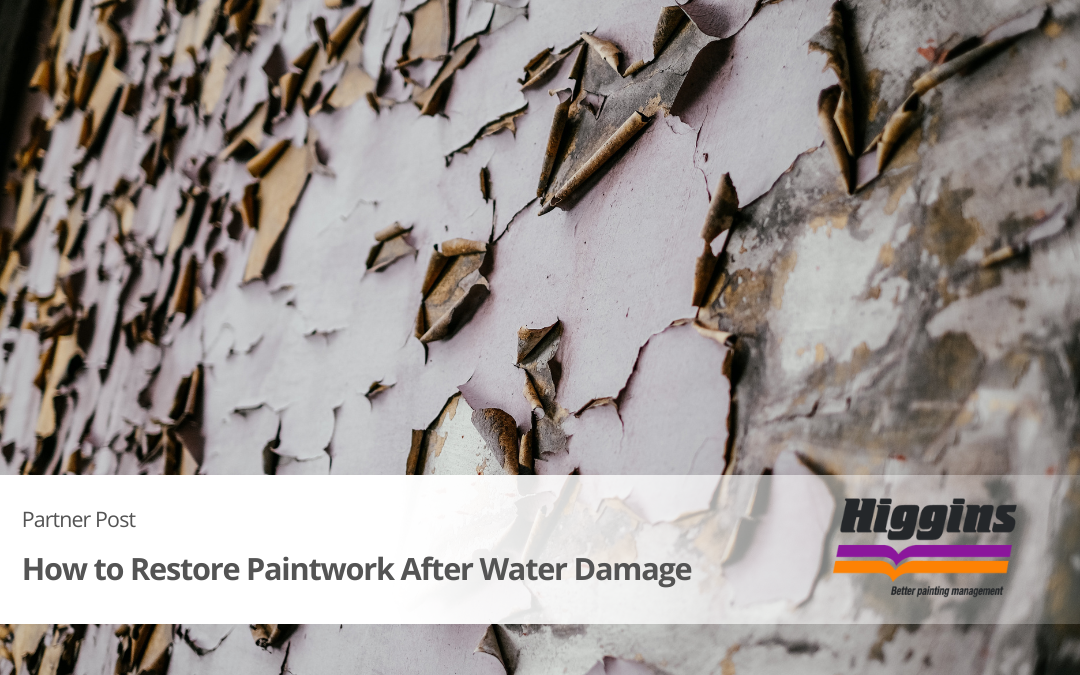Water damage continues to be a huge topic of conversation so this month Higgins shares some tips on how to restore your complex and paintwork after signs of water damage take affect.
Over time, moisture can cause the paint on surfaces to bubble, peel, flake, or start to stain. If left ignored, water damage can turn a once healthy-looking building into a dilapidated and potentially unsafe property.
Have you noticed any signs of water damage in your building? Fortunately, restoring paintwork after water damage isn’t always as troublesome or time-consuming as it may seem. We’ve put together 5 steps to restore paintwork to renew the appearance and health of your buildings.
1. Assess the extent of the damage
Assessing how severe or extensive the water damage is, is important before you begin to restore paintwork. If there are water stains on your building’s walls but the surface is still firm to touch and there is no other sign of damage, then you can prep your walls for a sealer, so the stains don’t bleed through the new paintwork.
However, you can’t restore paintwork if your walls aren’t dry and if your building materials have lost their structural integrity due to water damage. When the surface is soft or bubbling then there is still too much moisture and you may need to call in water restoration contractors who are equipped to deal with the situation, especially if there is mould appearing.
2. Clean the area to be restored
First, remove all bubbling, peeling, and flaking paint with a scraper or wire brush so the surface is smooth. Then give the area affected by water a good clean. This is a crucial step to prep your walls in every painting project, and repairing water damage is no different. You can use something as simple as sugar soap and a damp cloth to clean the wall and then give it ample time to dry.
3. Fill & sand the surface
You can apply a filler to any imperfections or grooves present on the surface to make it ready for paintwork. After applying filler, you should leave the walls to dry properly. Once it has completely dried out, you should sand the surface until it’s smooth.
4. Apply primer and sealer to the damaged area
For this step, we recommend using Dulux 1 Step Primer Sealer Undercoat with Dulux Weathershield. This product provides a superior, long-lasting paint finish and has mould-resistant and stain-blocking properties. It helps seal the porous areas of the surface to prevent water from permeating, protecting your surface from future water decay.
5. Time to restore paintwork to its former glory!
Now that your surface is clean, primed and protected from potential damage, you are ready to repaint your building’s walls. If done properly, your repair work should be almost invisible to the naked eye and your walls will be looking fresher than ever.
Employing experienced professionals who can ensure a long-lasting paint finish to protect your building is the best way to restore paintwork. Skilled painting contractors know the intricacies of prepping surfaces for paintwork, the different products necessary for a quality job, specific application techniques, and the safety measures for dealing with compromised or damaged building materials.
Your paintwork is an investment that needs protecting to ensure the ongoing appearance of your building and reduce future expenses. Learn how to keep your paintwork looking fresh for longer with our handy guide to painting maintenance.
.
